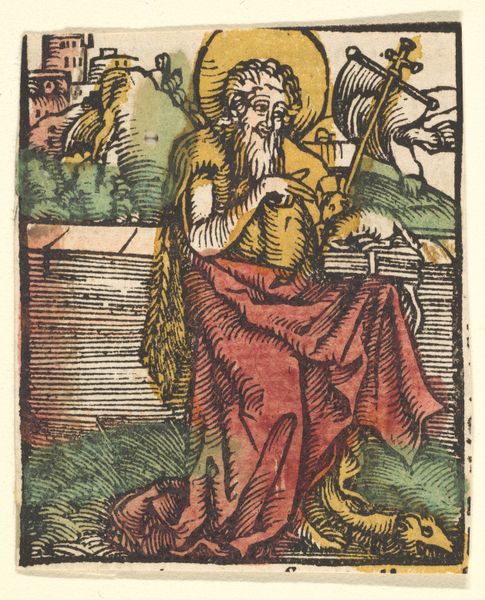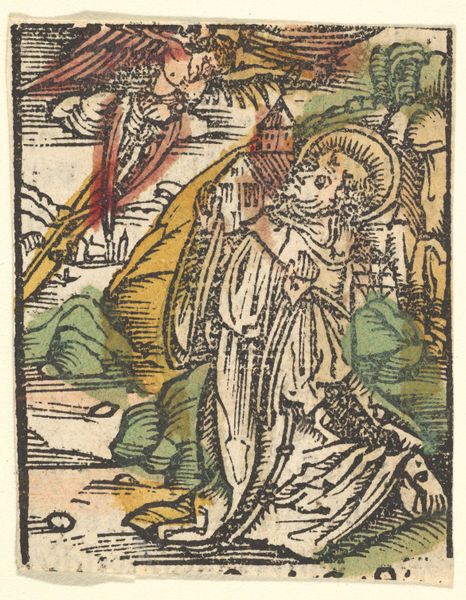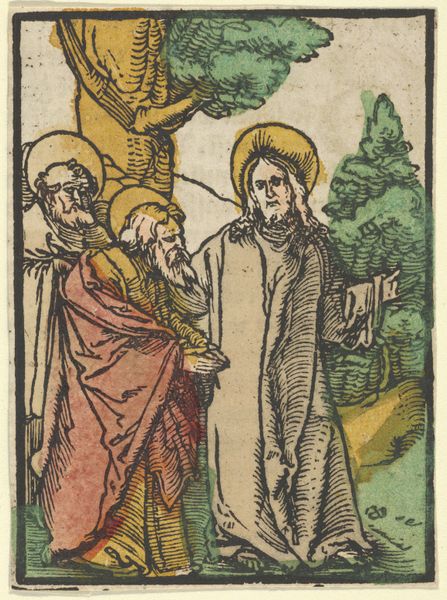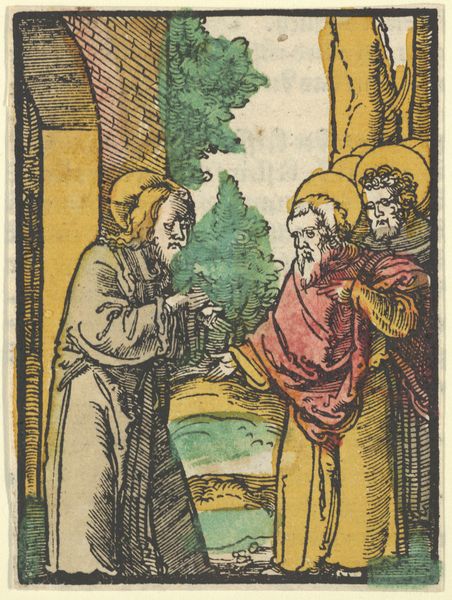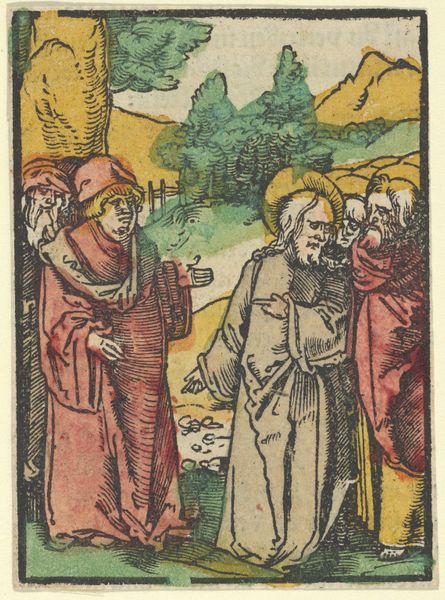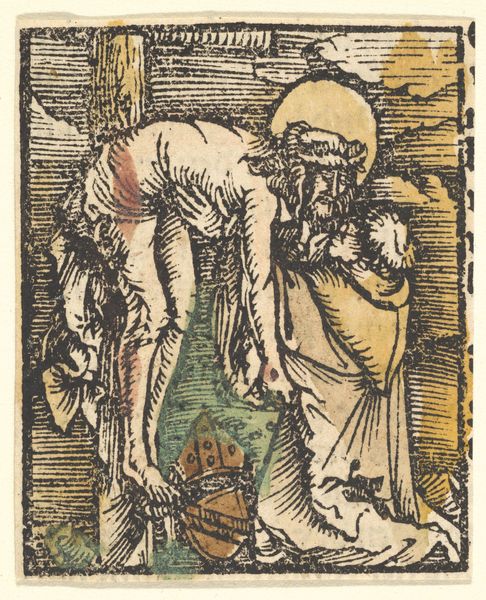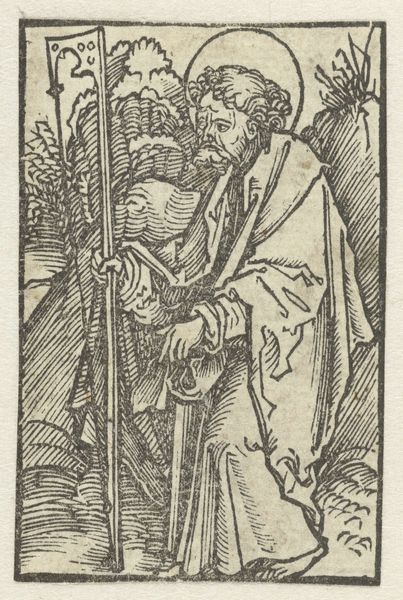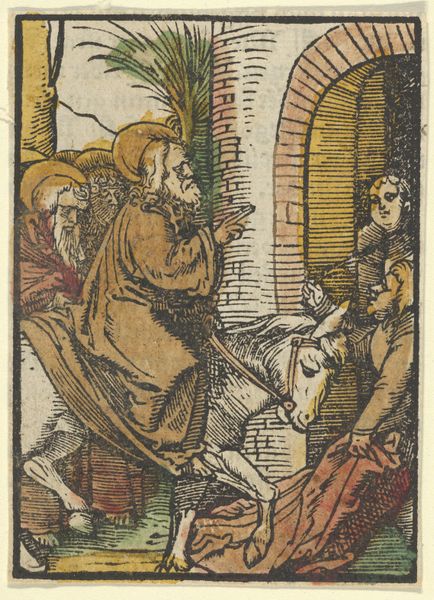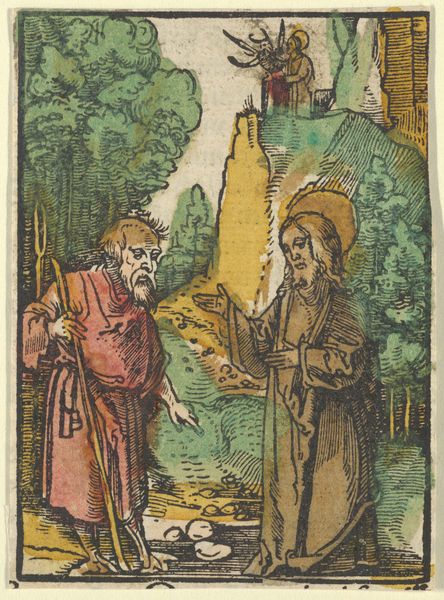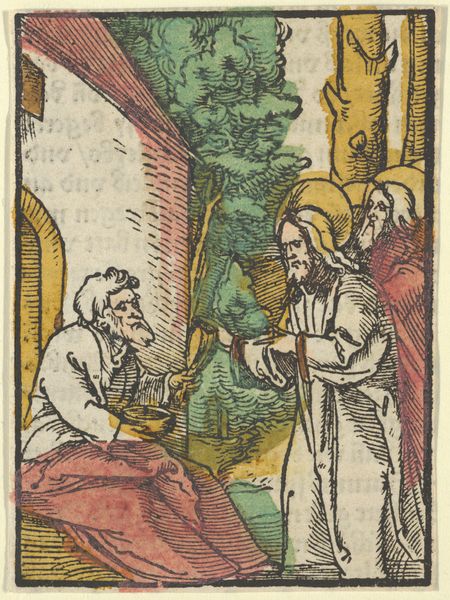
drawing, print, woodcut
#
drawing
# print
#
figuration
#
woodcut
#
history-painting
#
northern-renaissance
Dimensions: Sheet: 2 3/8 × 1 15/16 in. (6 × 5 cm)
Copyright: Public Domain
Curator: This is a woodcut from the Northern Renaissance, dating somewhere between 1511 and 1600. It's titled "St. Matthew (copy)" and attributed to Hans Baldung, currently residing here at The Metropolitan Museum of Art. What are your first thoughts on it? Editor: Stark. It strikes me as immediately violent, a clear depiction of martyrdom. The colours, though muted, heighten that sense of brutal interruption, wouldn't you agree? The impending decapitation leaves very little room for alternative interpretation. Curator: I appreciate how you've focused on the image’s inherent violence, as it certainly demands we consider broader issues of power and religious persecution. Notice how Matthew is rendered kneeling, seemingly accepting his fate. Considering period, class and religious structures, it certainly embodies a dynamic where individual agency is profoundly limited, mirroring societal realities where dissent was often met with brutal repression. Editor: Absolutely. And notice the halo, almost floating independently. The contrast between it and the sharp edge of the executioner’s blade, the softness versus hardness. We're witnessing a disruption, a collision of worlds and belief systems distilled in these opposing visual elements. This also brings in questions regarding authority, where one asserts it violently over another in what appears to be a structured ritual of power. Curator: That observation adds depth to this piece. Viewing it through the lens of coloniality and its devastating impacts offers a compelling understanding about how these types of religious justifications historically facilitated violence against colonized populations, where beliefs were violently replaced. It’s also worth considering how woodcuts like these, with their relative ease of reproduction, served as propaganda. Editor: Yes, precisely! This readily available medium provided a powerful vehicle for circulating ideology. Reflect on the role symbols play here—the sword as an instrument of earthly power and the halo symbolizing divine legitimacy – this work uses this iconic language effectively for early communication, helping transmit belief. And as we continue reflecting on the power structures in this artwork, perhaps it’s necessary that art historical and social interpretations intersect, challenging its place as merely a 'copy’ within artistic canons, given the continued resonance the symbol and scene of martyrdom still has in contemporary dialogues. Curator: You've masterfully illuminated that. Now, considering how contemporary discussions on intersectionality, religion, violence, and identity interrelate, one could certainly revisit this piece. Editor: Indeed, prompting dialogue is really what it all comes down to.
Comments
No comments
Be the first to comment and join the conversation on the ultimate creative platform.
